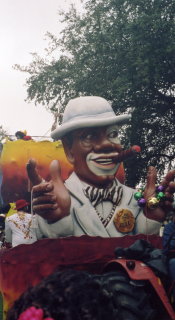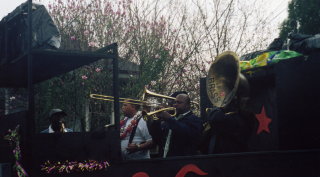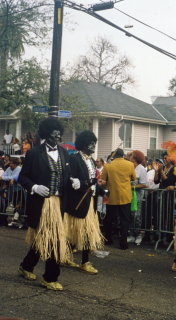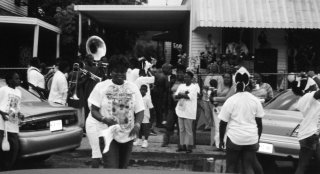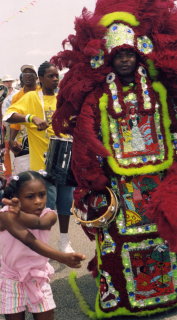Another One Gone...
| Jazz and R&B reedman Frederick "Shep" Sheppard was found dead January 21st of liver disease in Phoenix, his home after he evacuated from New Orleans after Hurricane Katrina. He was 61. I didn't know Mr. Sheppard personally, but I certainly knew him by reputation. He was another one of those reliable, journeyman players who used to populate the music business in great numbers but are now a rapidly vanishing breed. He'd worked as a sideman with R&B players like Otis Redding and Ray Charles, performed in several brass bands in the New Orleans area and was always turning up on gigs with local bandleaders like Fats Domino, Dave Bartholomew, Irma Thomas, Eddie Bo, Bob French, Bo Dollis, Walter Payton, Greg Stafford and Cyril Neville. Like a lot of New Orleans players he could cover a lot of styles and was strong on all the doubles (flute, clarinet, soprano, alto, tenor and baritone saxophones) and also doubled on Fender bass, an instrument he picked up in the 1960s when club owners began booking rock bands in place of jazz. Many of you may have seen him, sharply turned out in his signature suit and hat, as part of the New Orleans band featured on the NBC television program "Studio 60 on the Sunset Strip." Sheppard is a prime example of why the music scene in New Orleans is in real trouble these days. Like many musicians who wish to return to the city, he found himself the victim of a double whammy; unable to earn a healthy income in the city, and priced out of an overheated real estate market. While the surface of the music scene here looks as active as ever (most clubs are open again, and there are even a few new additions) the club scene is only the tip of the iceberg in terms of income for many musicians. Out of the public eye pre-Katrina were all kinds of bread-and-butter gigs playing for jazz funerals, second-line parades, community picnics and sporting events and corporate shindigs in the big, downtown hotels. The corporate stuff is slowly starting to come back but all the rest was largely rooted in (and financed by) the African-American community. And while it's true that some primarily white neighborhoods here took a bad hit (Lakeview in New Orleans and St. Bernard parish downriver being primary examples) it's just a fact that black neighborhoods took the brunt of it, and that those same neighborhoods often contained people who have the fewest resourses to rebuild with. There was an awful lot of 'community' music in New Orleans pre-Katrina, and a lot of those communities aren't back. And then there's the rent. One of the reasons New Orleans was such an attractive place for musicians was that it was possible to participate in a live music scene that had, per capita, as much straight-ahead jazz as Manhattan going on, but it wasn't necessary to pay out huge rent dollars for the dubious privilege of living like a rat. Good ole supply (as in there ain't none) and demand (huge) has changed all that. We're not quite up to the NYC standard yet, but we're definitely up to Vancouver's. The current labor shortage in the city is directly tied to this, and it's not just affecting low-wage service industry workers. The Recovery District school system has a huge teacher shortage (they've had to wait-list 300 students this semester) and is having great difficulty attracting teachers to the area, even offering a starting wage of $36,900, not bad by American standards. The more I see guys like Sheppard dying off like this, the better I feel about pulling the plug on my career as a full-time musician while I still had my health. This country simply does not treat it's artists (or even it's entrepenuers) very well. Most people who live outside the U.S. aren't fully present to just how fucked up the situation is. Even the lucky ones (like me) who are covered by employee-based health insurance plans have to deal with significant co-pays and deductables, and can face the prospect of bankruptcy and homelessness in the event of serious illness. Musicians, or anyone foolish enough to work for themselves, either have to rely on private plans if they can afford them ( and they can be denied coverage completely for reasons as trivial as childhood asthma) or throw themselves on the mercy of the various 'charitable' alternatives (musicians clinics, charity hospital systems, neighborhood medical clinics) which nevertheless often still demand payment on the level of, say, 10% of cost, in addition to sometimes being the kind of third world hell-holes that you'd expect in a culture that views poverty as a moral failure on the part of the poor. Being a musician is not a healthy lifestyle choice in this country. |

